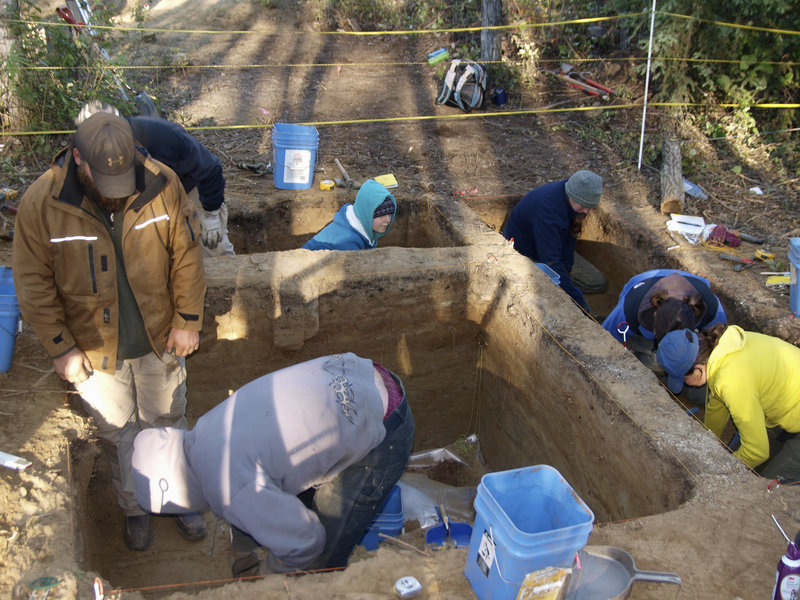Some 11,500 years ago, at the end of the last Ice Age, a child died near a river in what is now central Alaska. The people living with the child in a tent-pole house – presumably the parents – placed the 3-year-old’s body in their home’s cooking pit and lit a fire. After two to three hours of burning, the family covered the remains with dirt and left.
That’s the dramatic story emerging from the study of the oldest human remains ever found in Alaska – and some of the oldest in all of North America.
“The cremation was the last event to take place in the hearth,” said Ben Potter of the University of Alaska Fairbanks, who led the team of archaeologists investigating the site on a broad sandy plain southeast of Fairbanks.
Their study of the site appears in this week’s issue of Science.
The cremation left about 20 percent of the child’s bones, enough for a detailed analysis of the scene. The child was placed on his or her back, with knees drawn toward the chest and the arms placed to the side. Charcoal indicates that a fire was built on top of the body.
Coloration of the skull shows that the fire was hot enough to burn the entire face and destroy the small bones there, said Joel Irish, also of the University of Alaska Fairbanks. But the fire was not hot enough to destroy the entire body. Because no other evidence of use of the cooking pit was found above the body, Potter and Irish concluded that the family left soon after.
“This is a child people loved, took care of,” Potter said. “The fact the house was abandoned speaks to that.”
The child’s teeth show that he or she was 2 to 4 years old, while stone knives at the site – and a peculiar scalloped feature of the child’s teeth – connect the child to the wide-ranging band of early North American immigrants, who researchers say migrated from Siberia during the last Ice Age, when the Bering Strait was exposed, to colonize a wide swatch of northern North America.
Until now, no one had found a permanent or semi-permanent house associated with the hardy people who survived in an subarctic region even colder than it is today. Other sites in Alaska and Siberia from around the same period look instead like temporary hunting camps.
But at this location – called the Upper Sun River Site in a translation of the Native American word for the locale – Potter and company were astonished to find a six-foot-wide circular pit, dug about a foot into the ground. Four post-holes surrounding the hearth and two other holes outside the circle indicate a tent-pole structure, perhaps covered with sod or animal skins, Potter said.
Archaeologists discovered the site in 2006 but did not find the child’s remains until the summer of 2010.
The cooking pit also held bones of rabbits, squirrels, grouse, and salmon, the last indicating that the family lived there during the summer.
In contrast to battles between archaeologists and Native Americans over the study of other ancient remains, leaders of two Alaskan tribal groups embraced the find.
“Words truly fail me in describing how excited we are and how almost reverent this find is for us,” said Joann Polston, first chief of Healy Lake Traditional Council.
“Priority one is to preserve the finding. That drives our decisions,” said Jerry Isaac, president of the Tanana Chiefs Conference.
Ancient DNA experts at the University of Utah are now trying to extract DNA from a sample of the child’s bones, although it is unclear if they will succeed. In recent years, researchers have extracted DNA from 40,000-year-old Neanderthal remains. Burning the flesh off the bones may have helped preserve the DNA, Potter said, as it left no food for bacteria that could have decomposed the bone.
Send questions/comments to the editors.



Comments are no longer available on this story